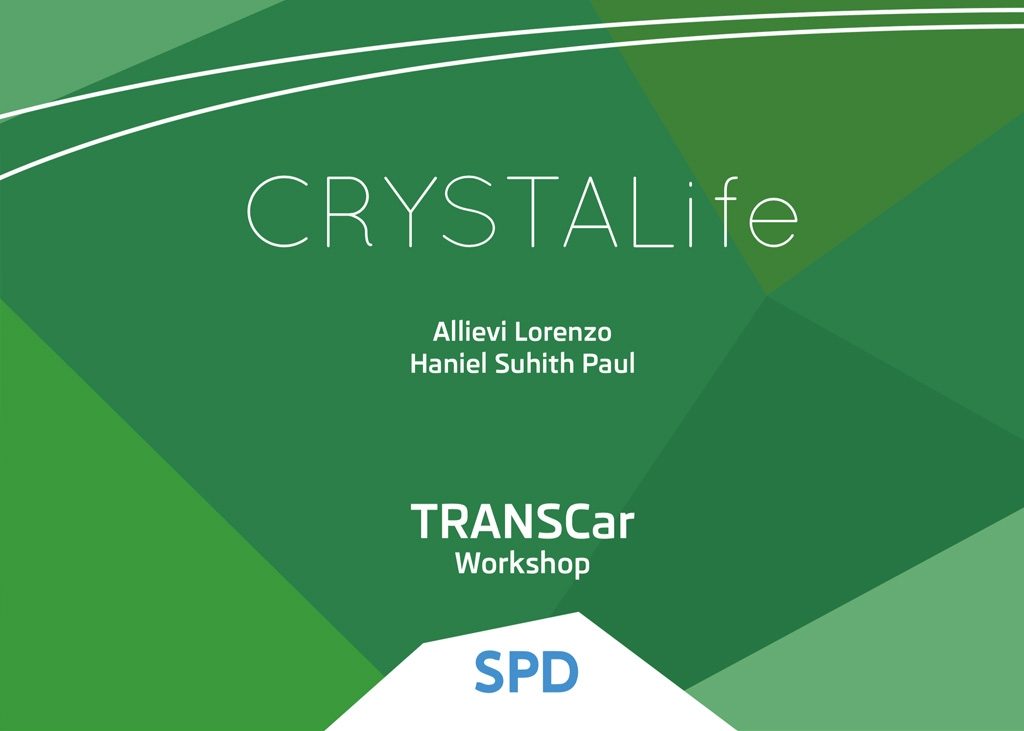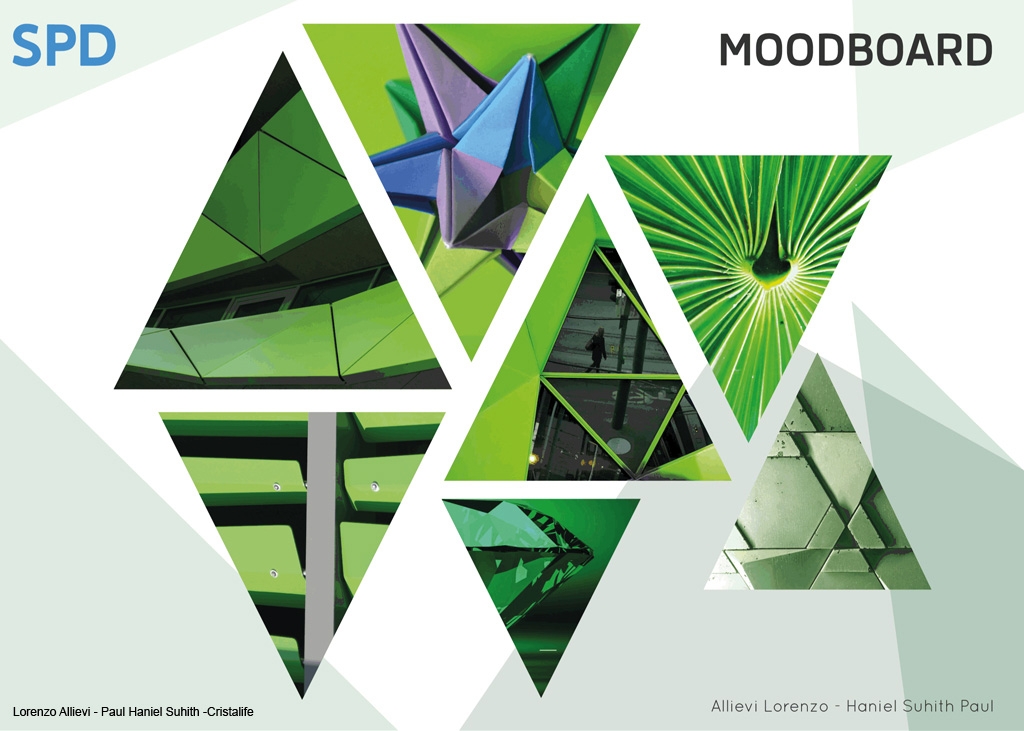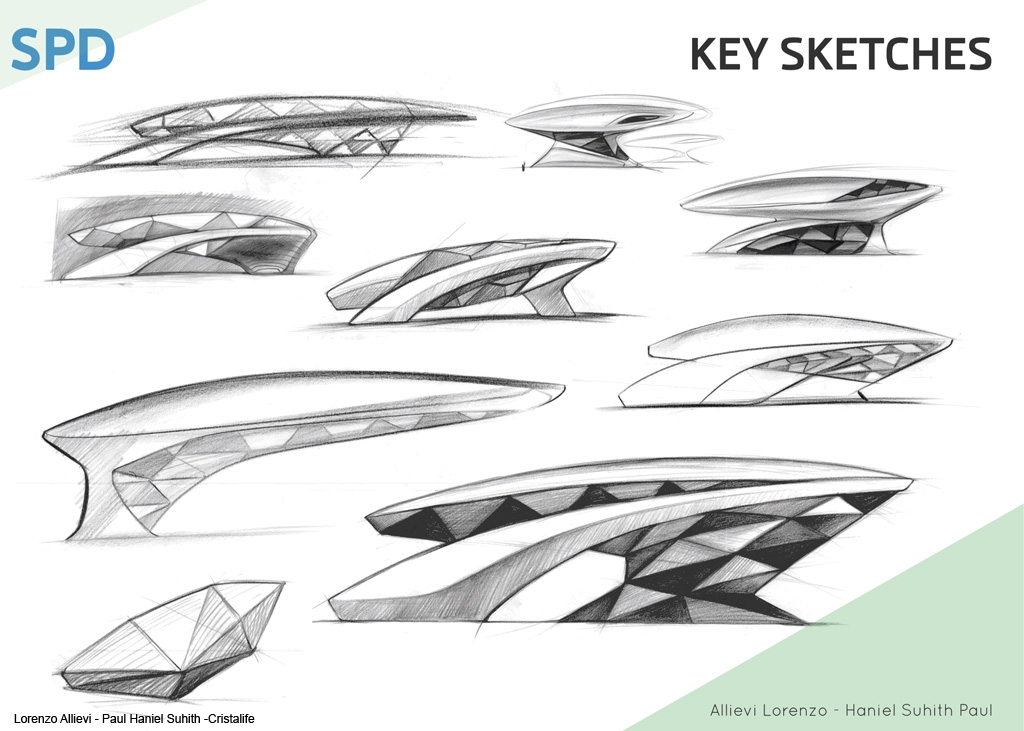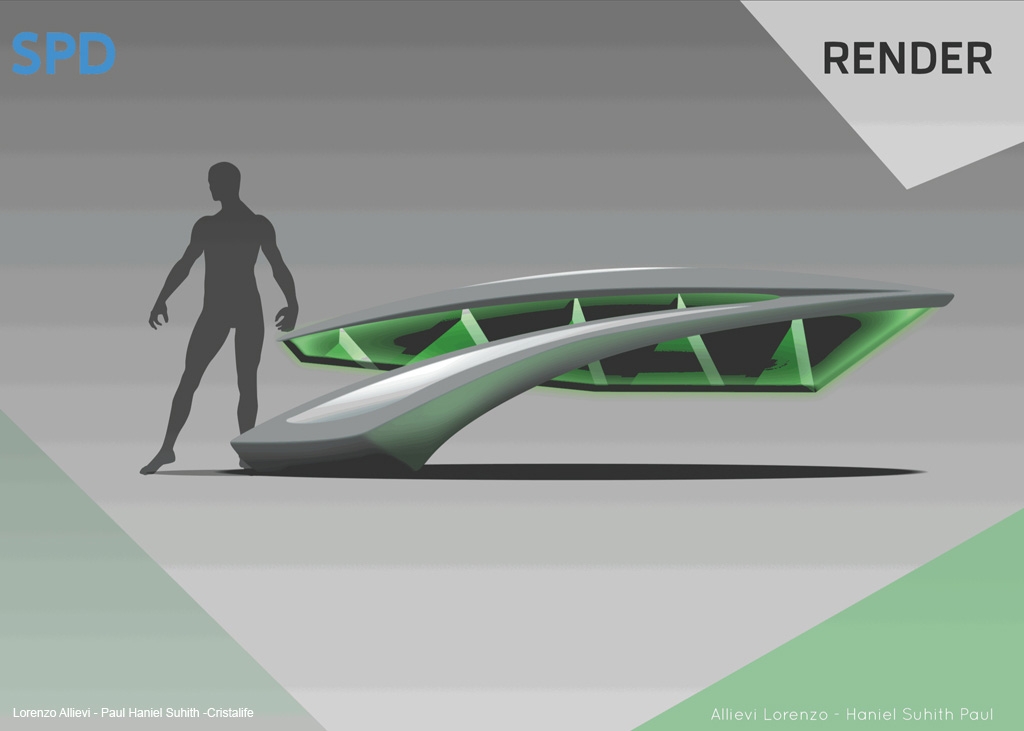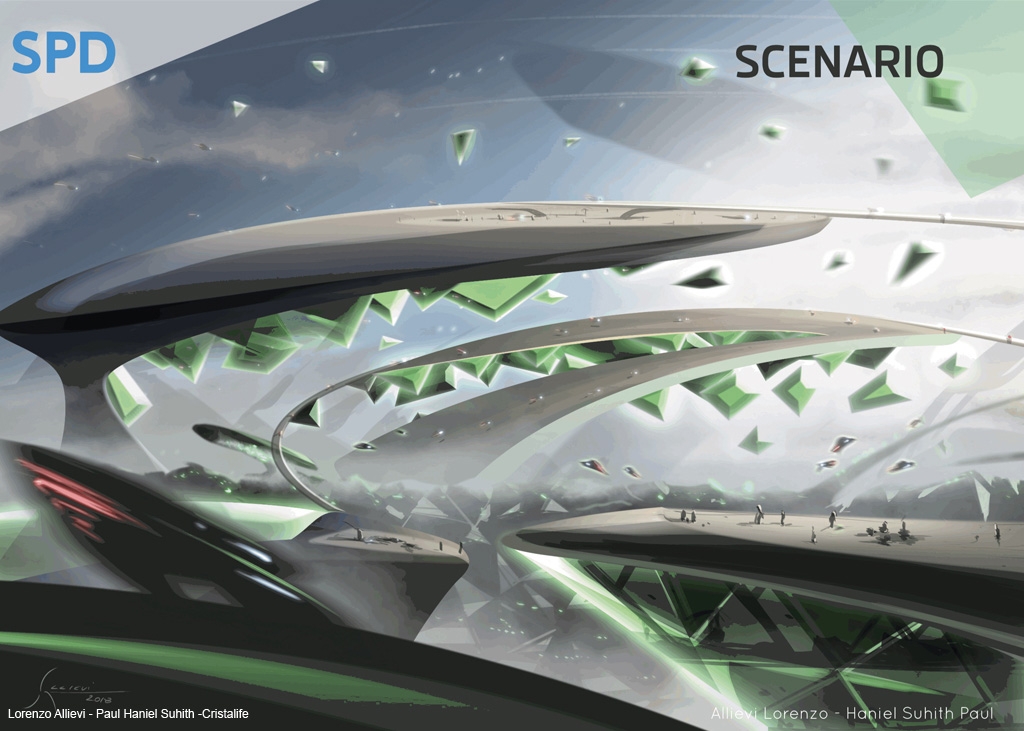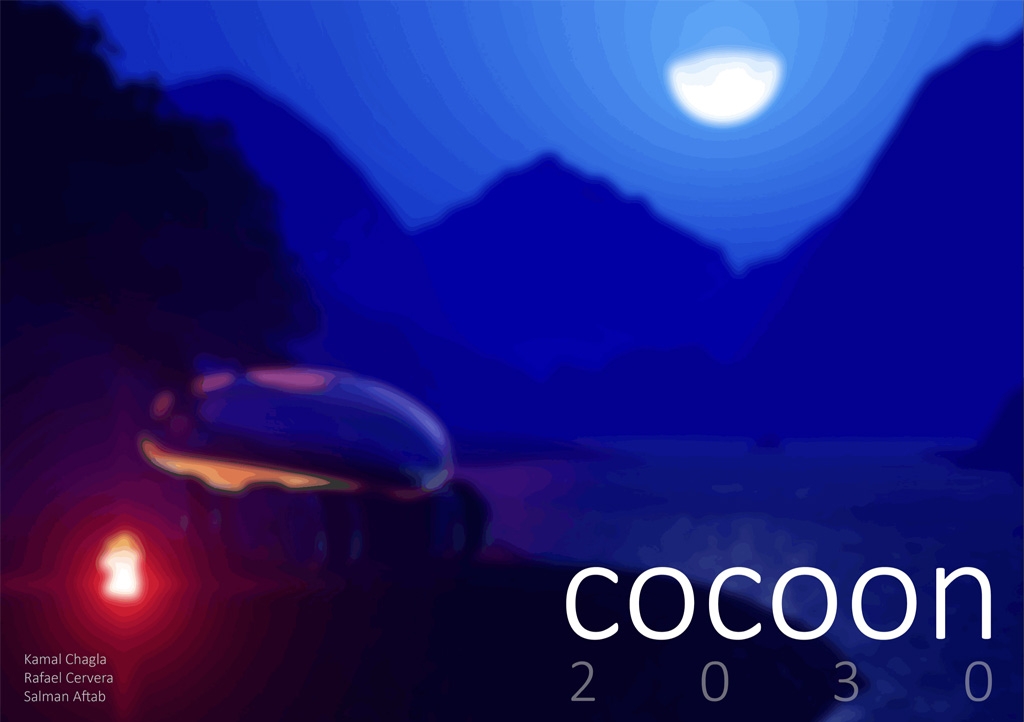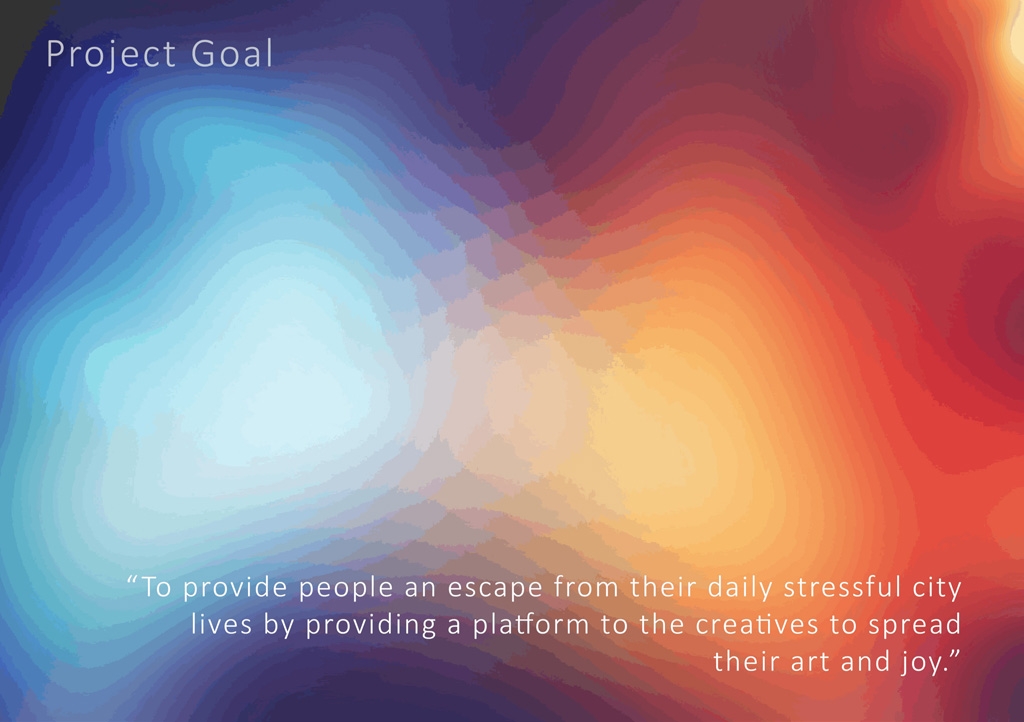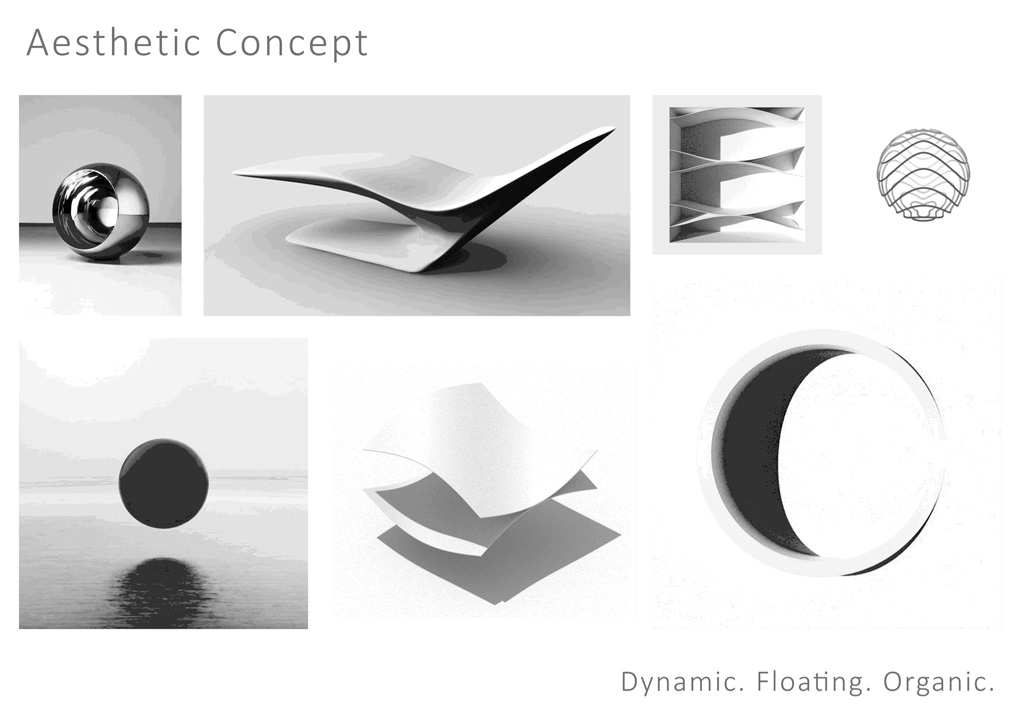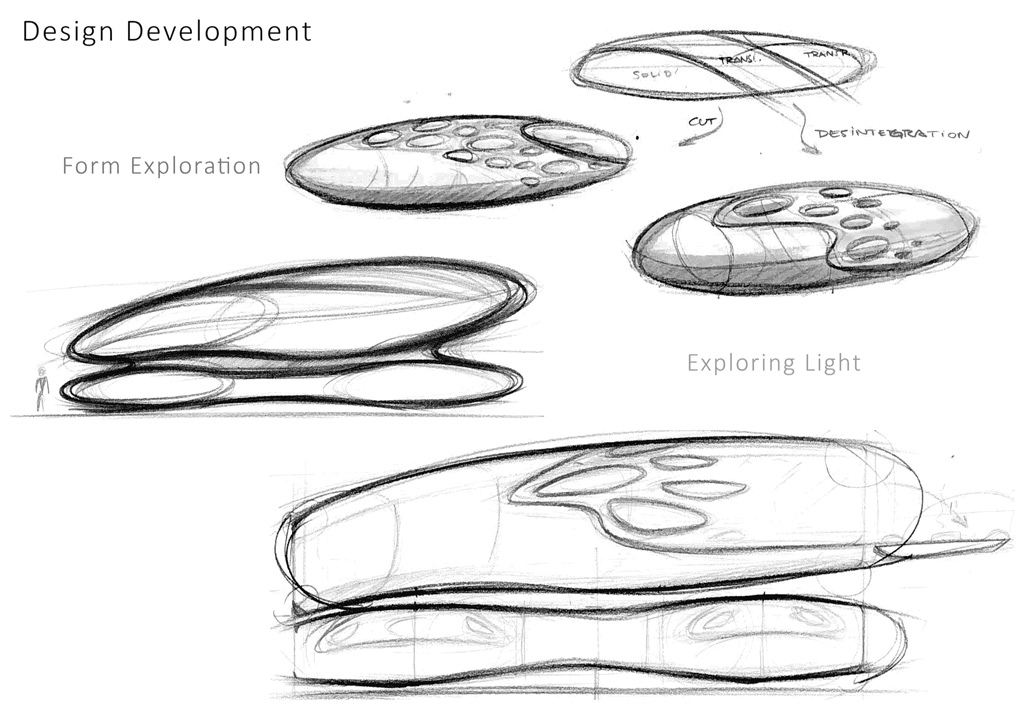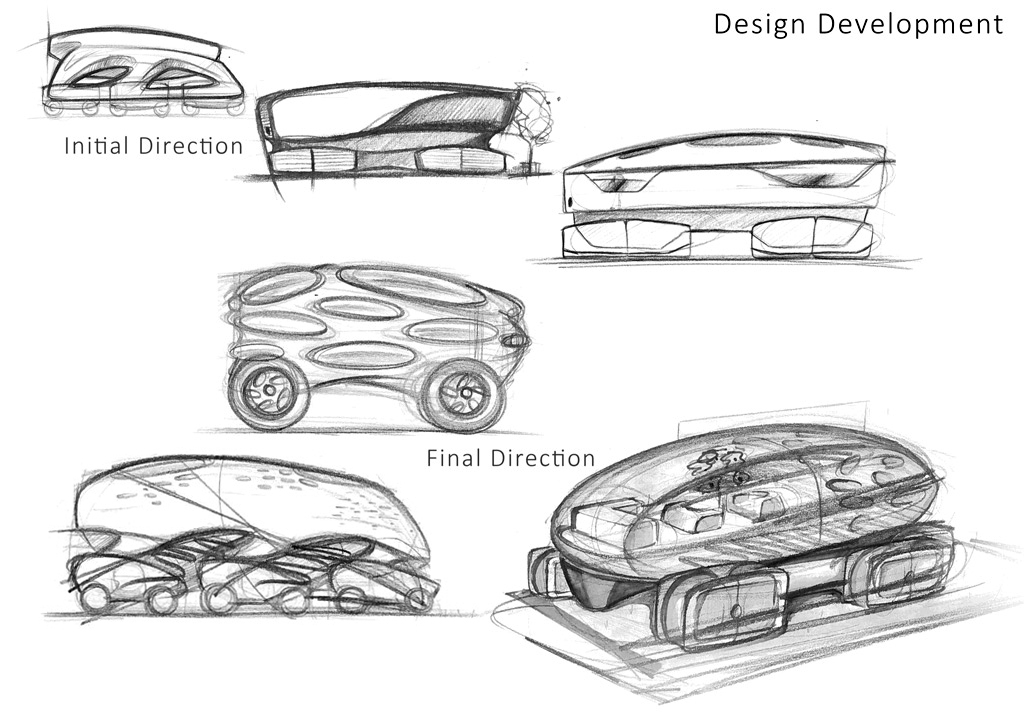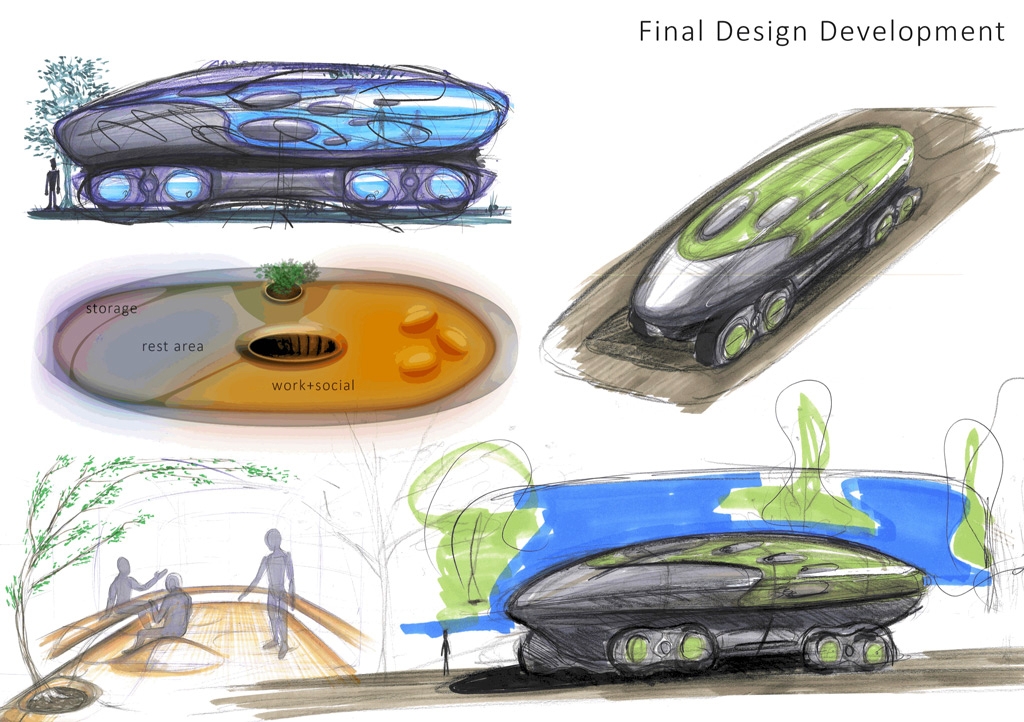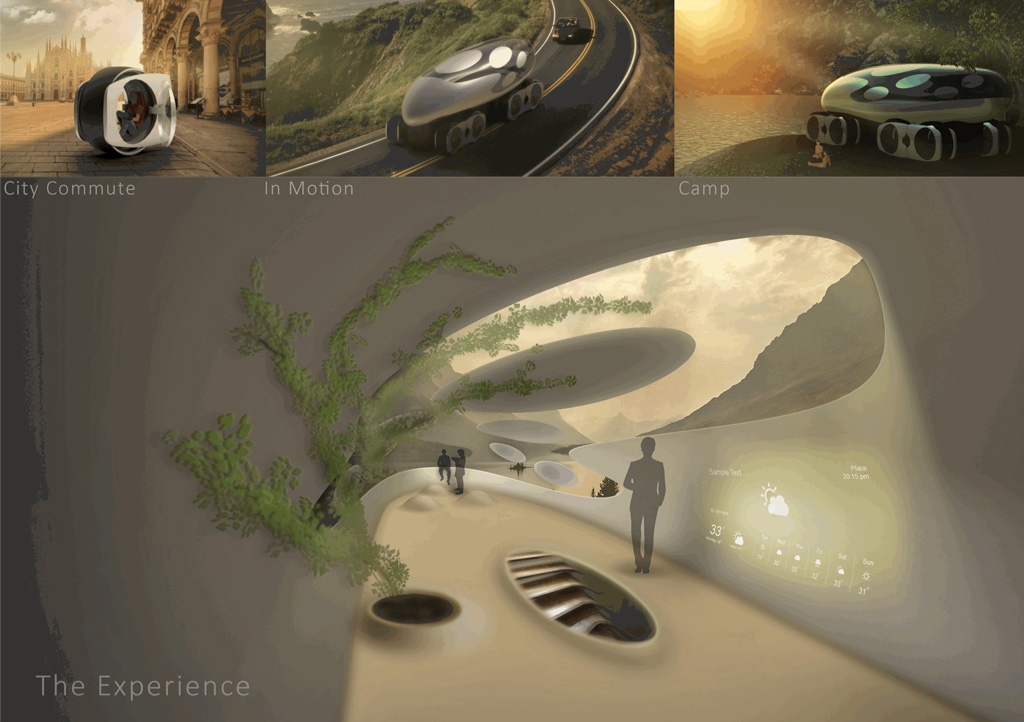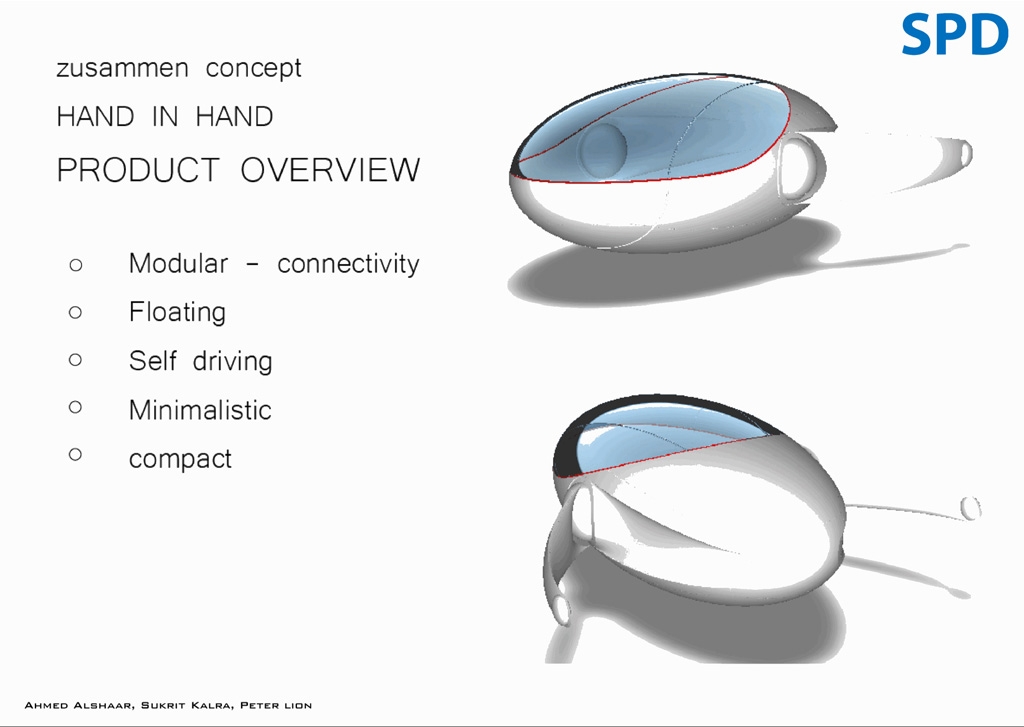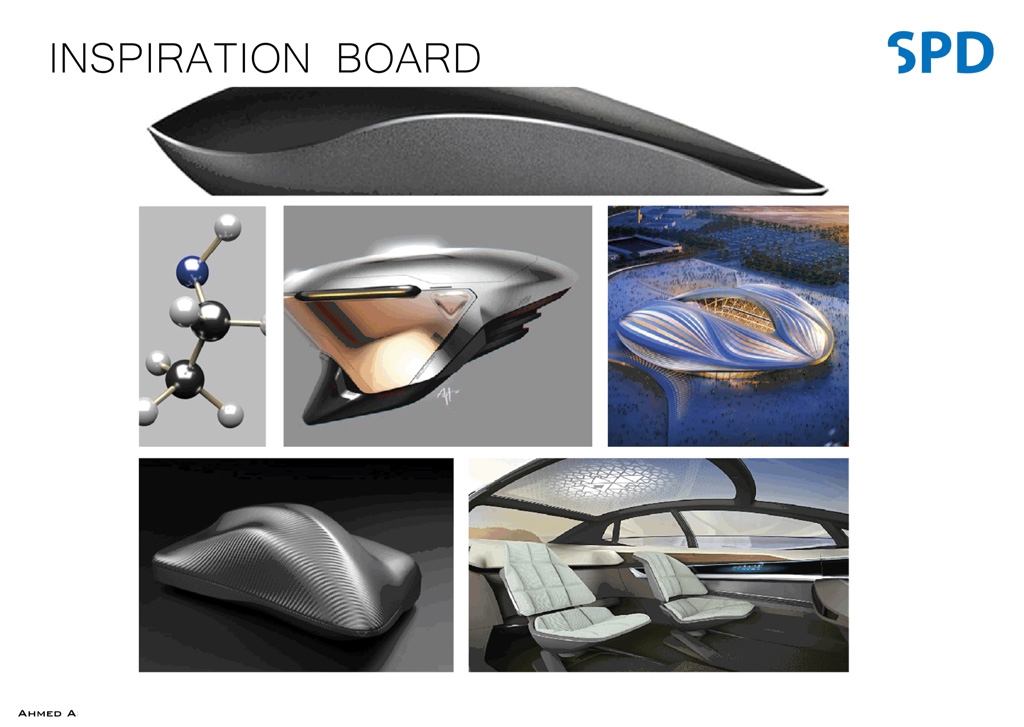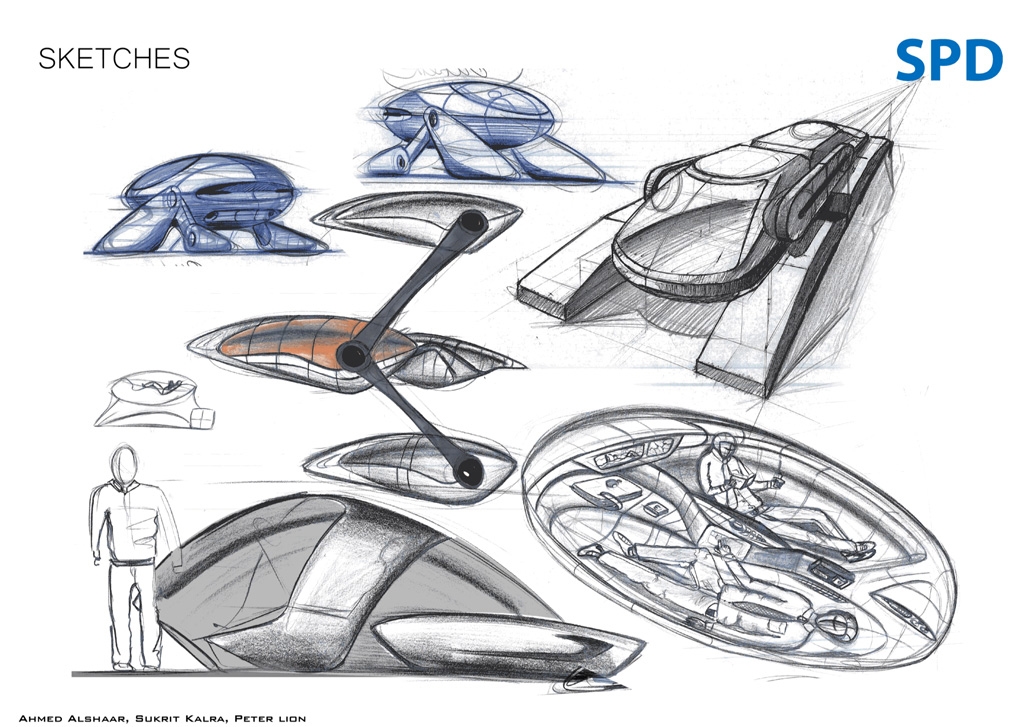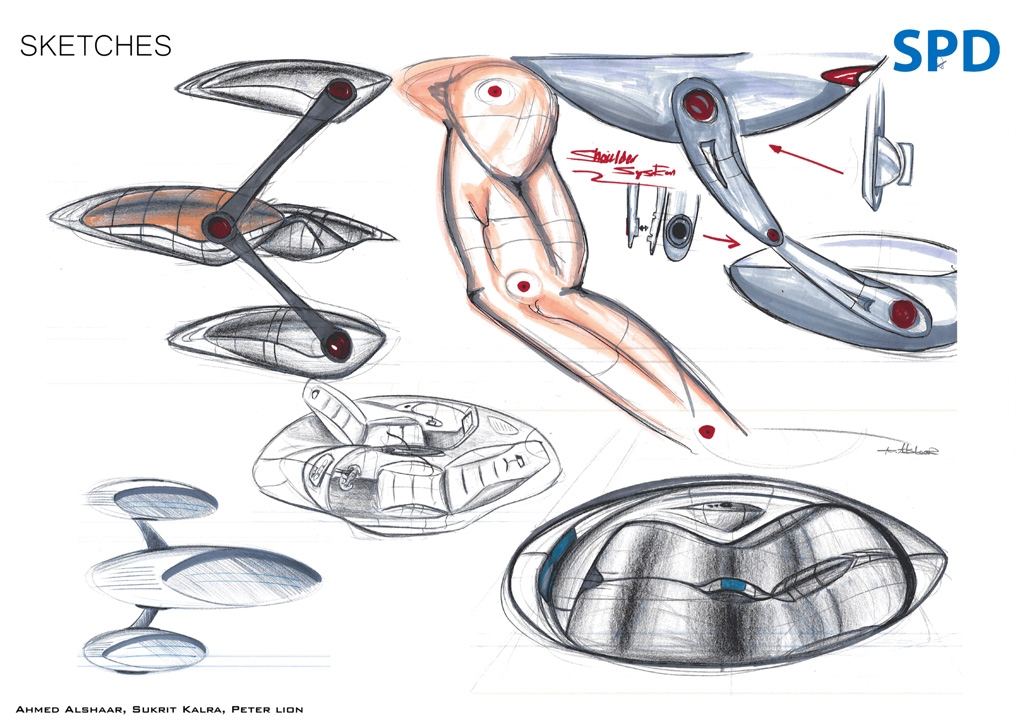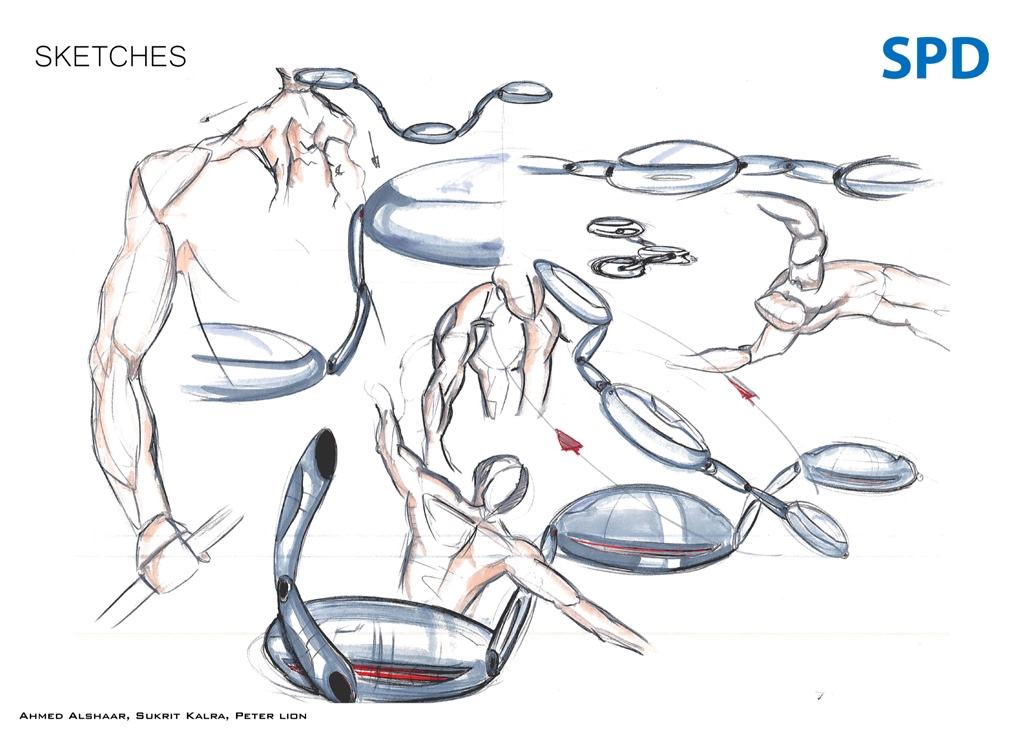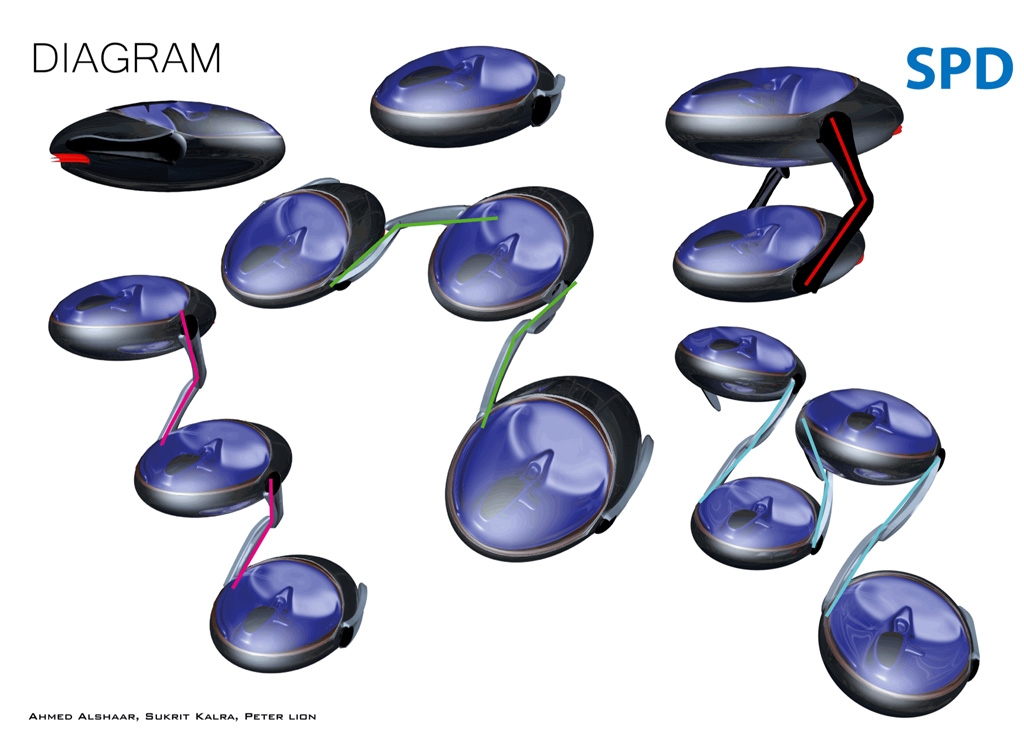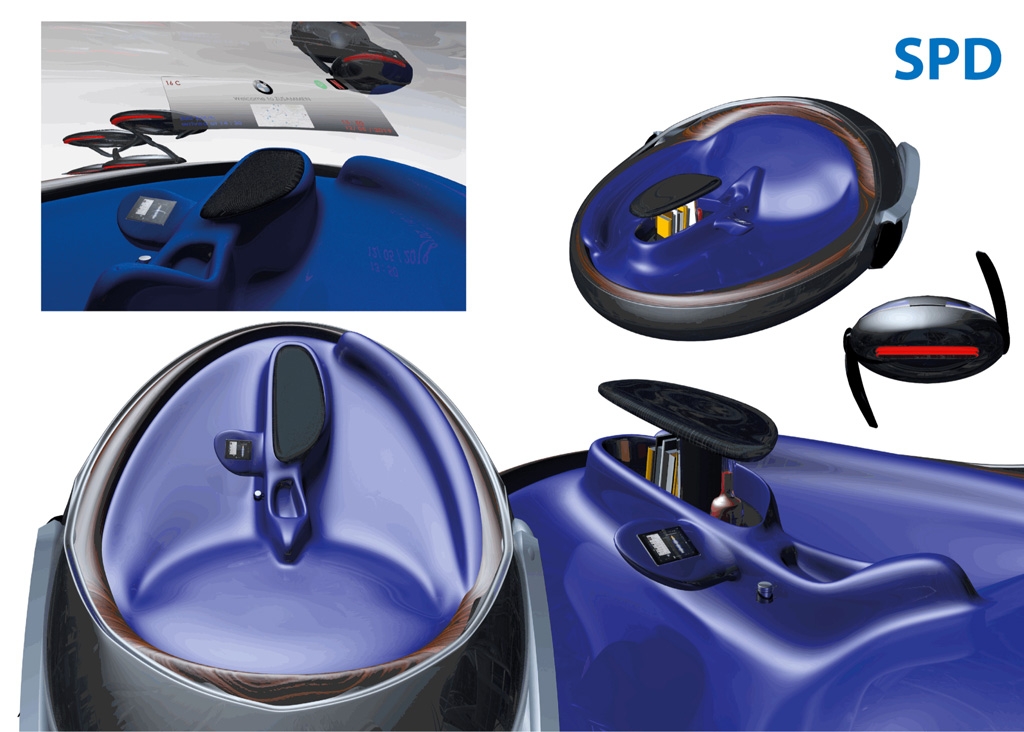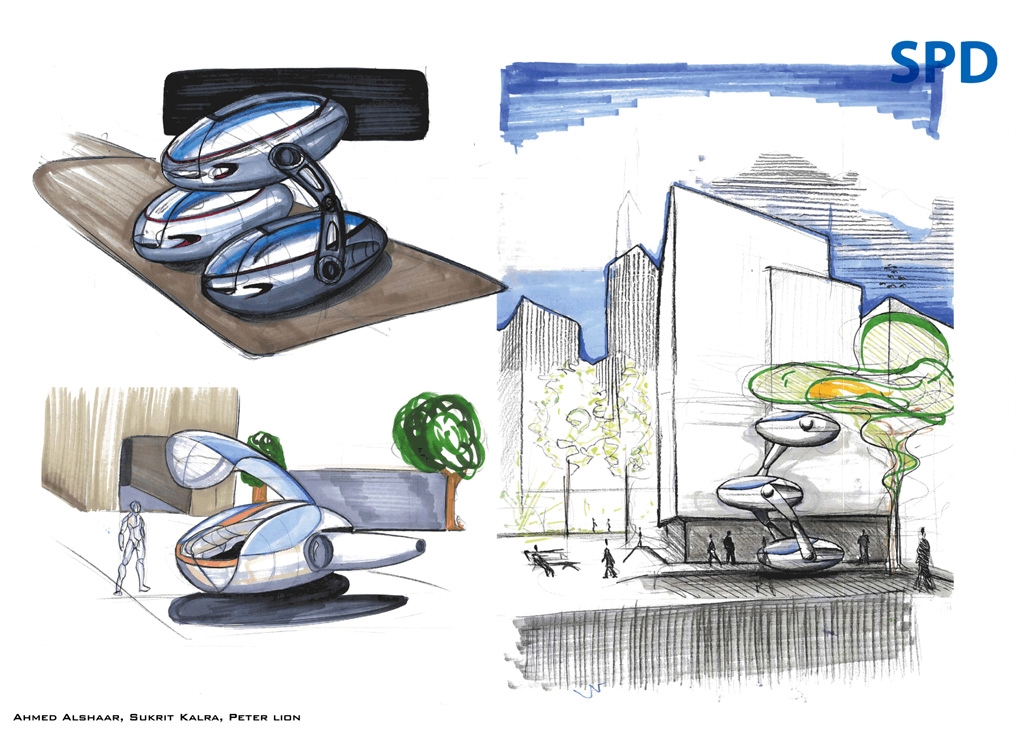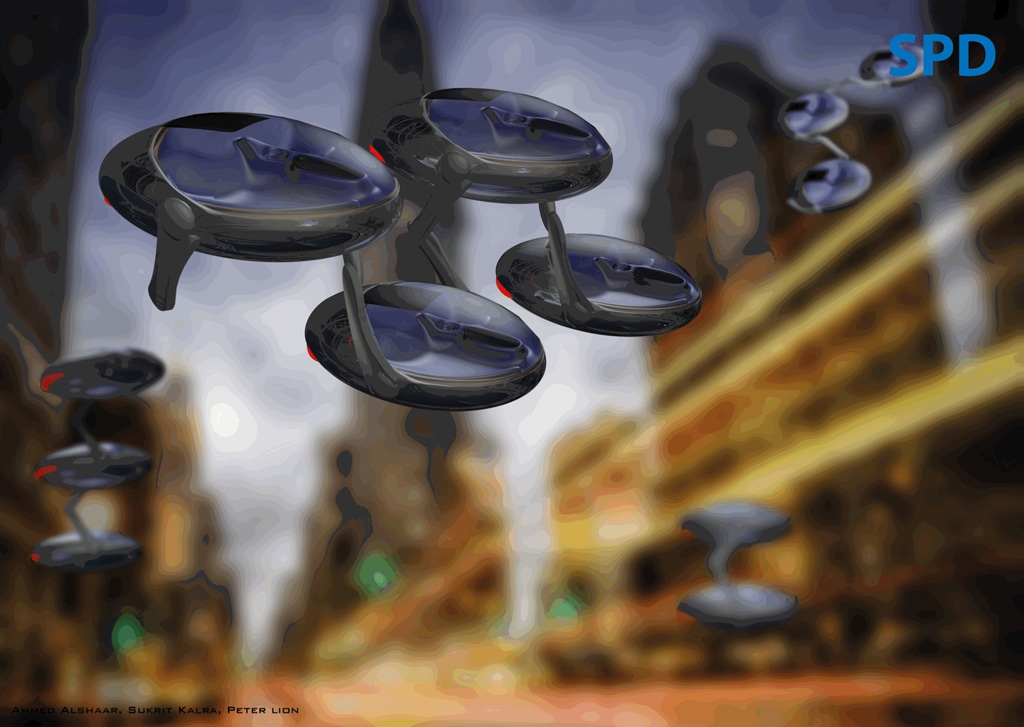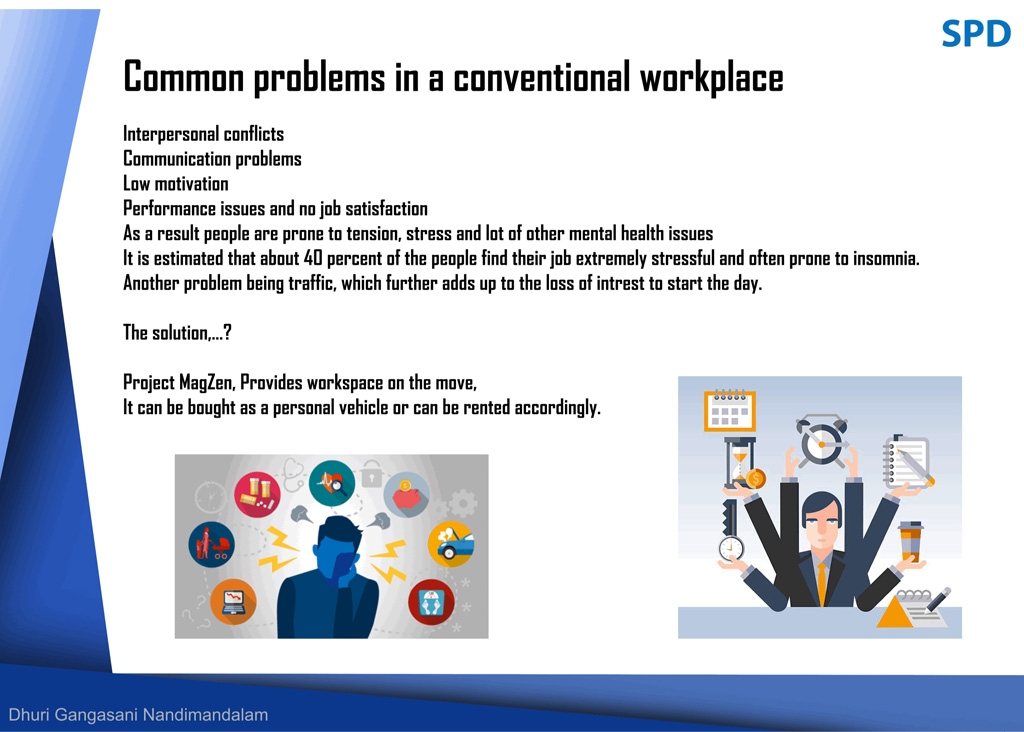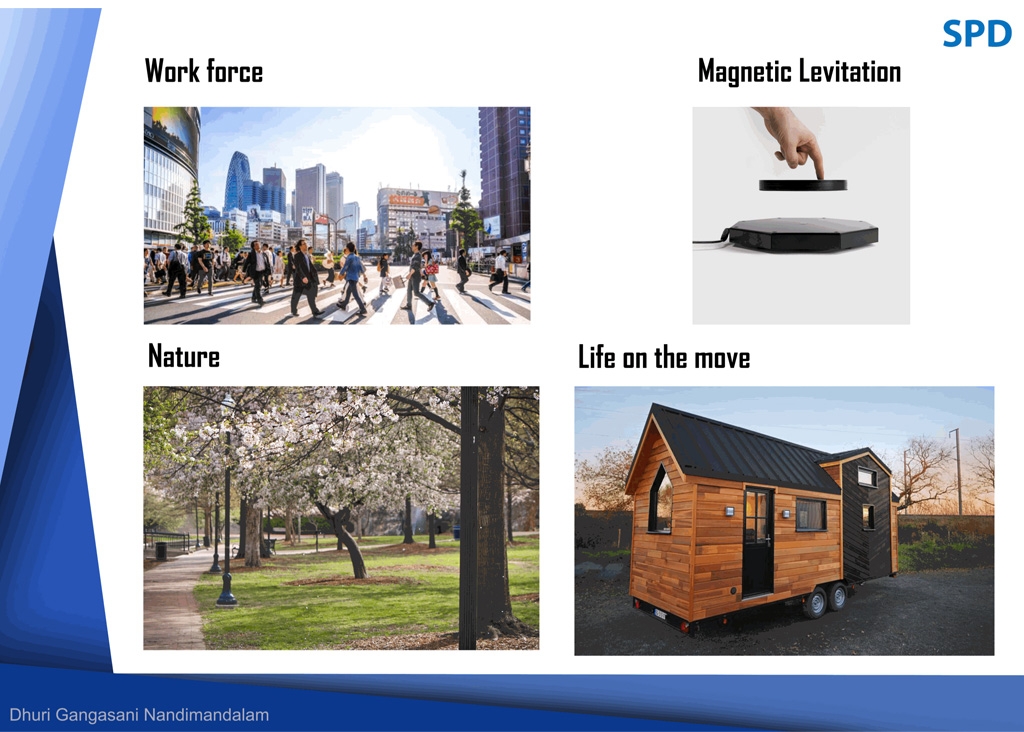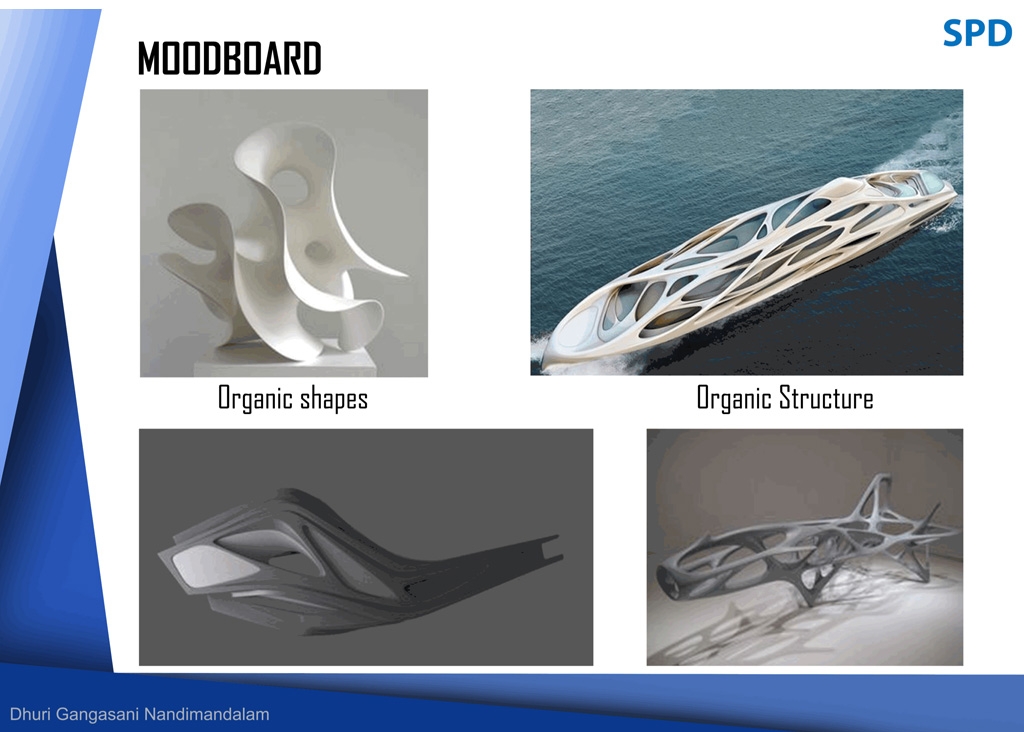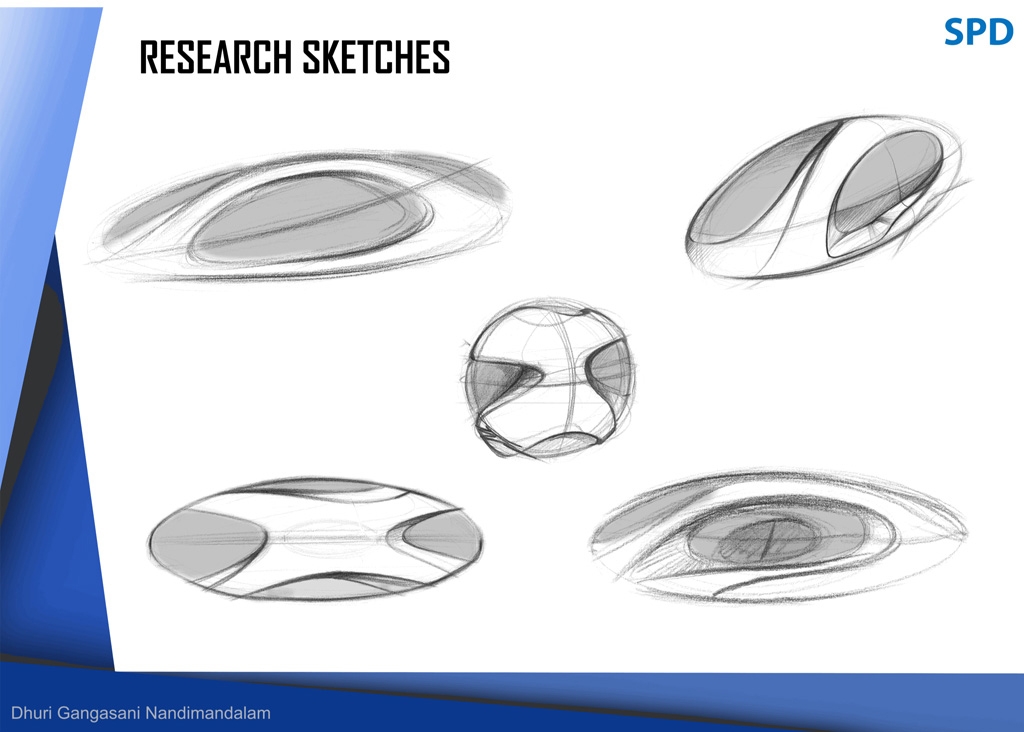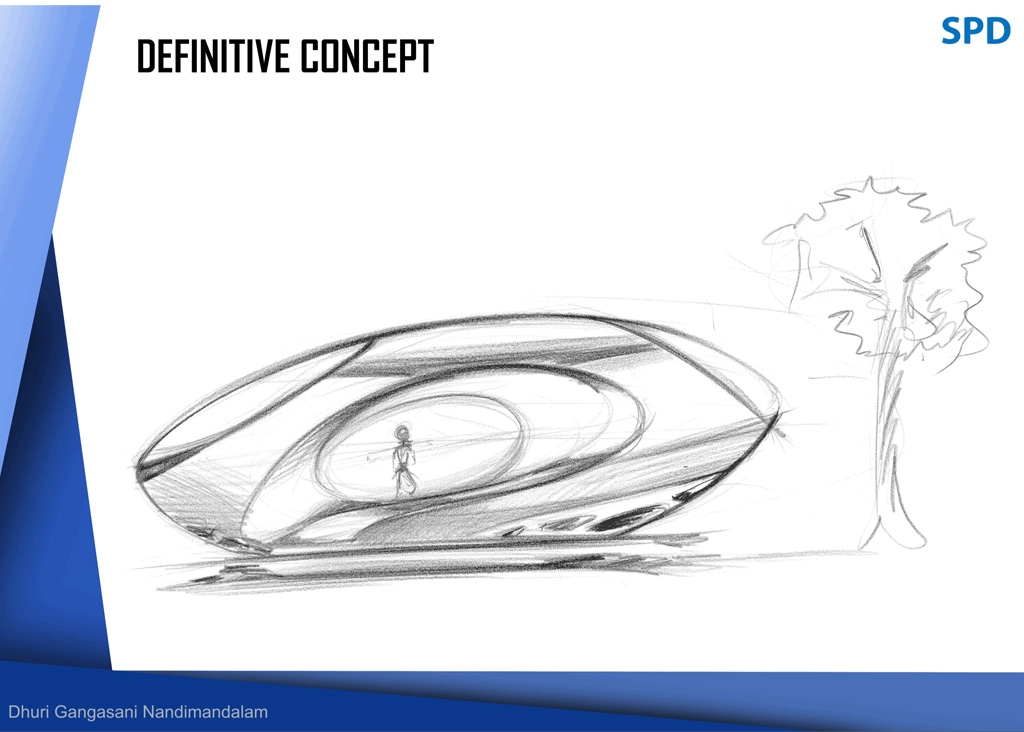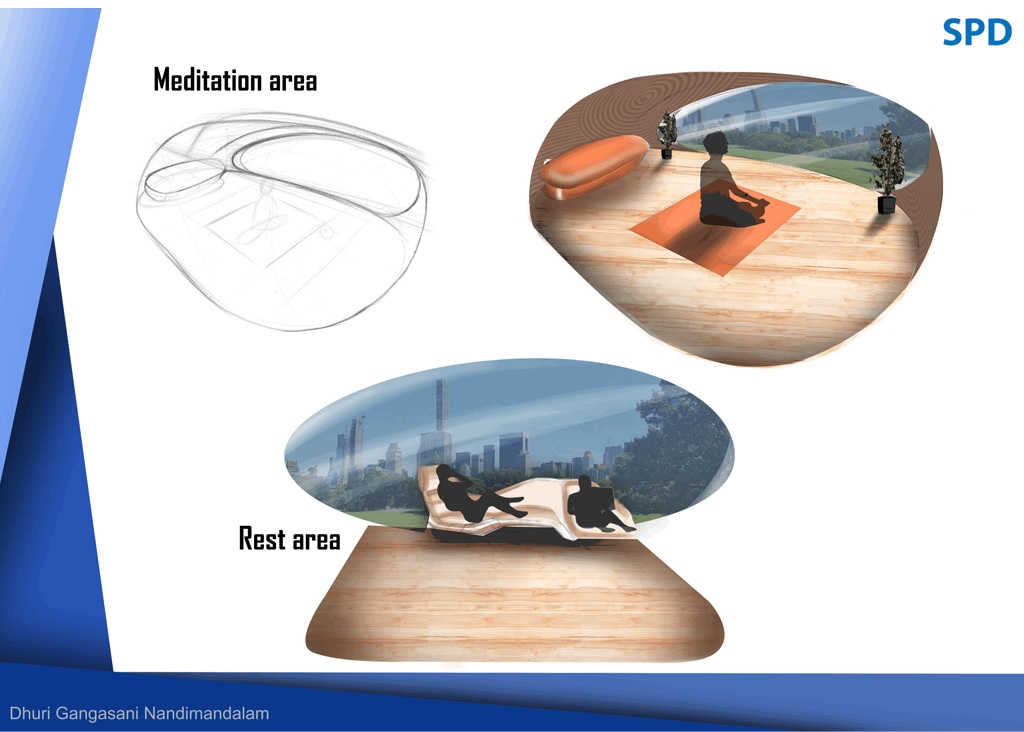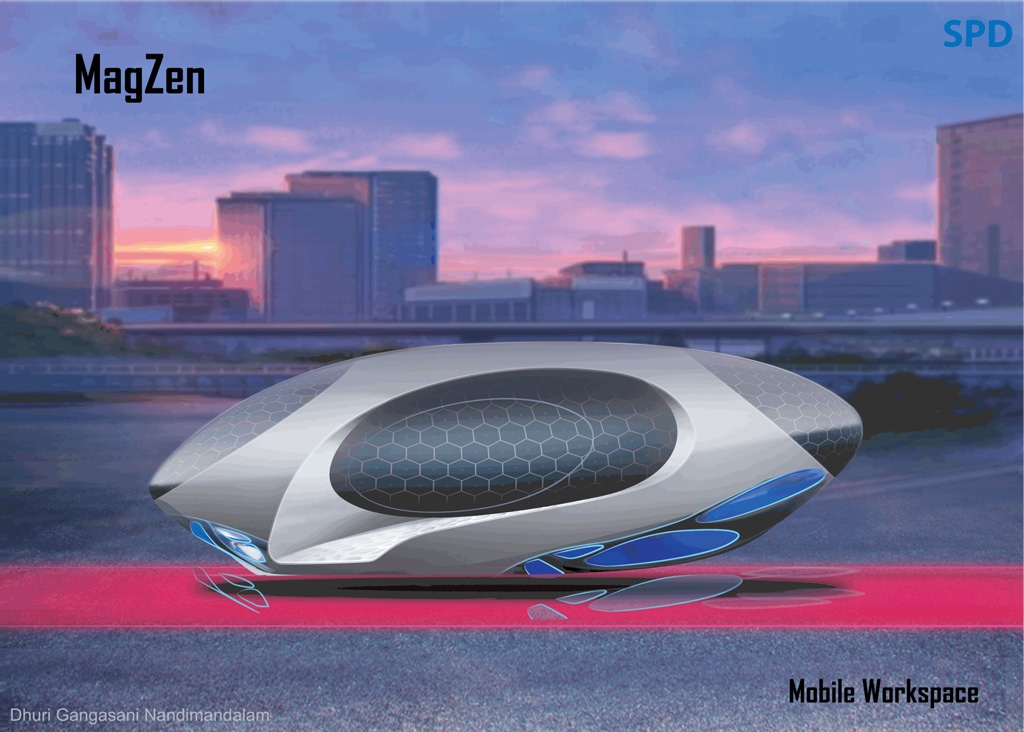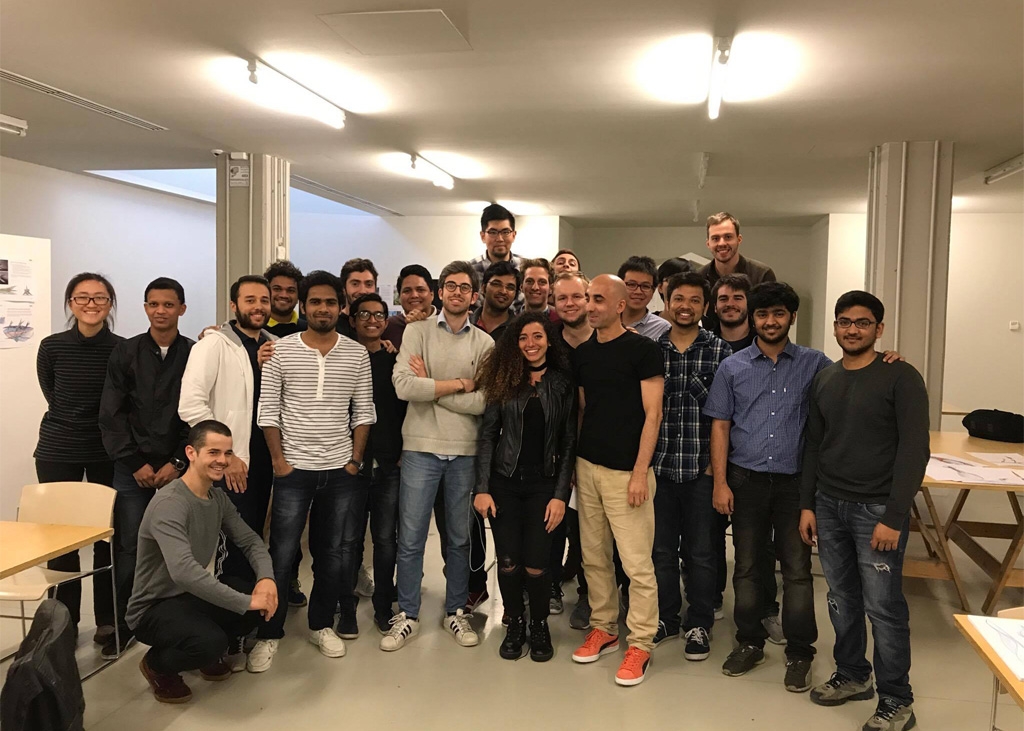WORKSHOP
FUTURE MOBILITY
THE ART OF MOBILITY
SPD Scuola Politecnica di Design, Milan
Car and Transportation Design Program
26-5 May 2017
CONTENT
The workshop aims to create an innovative vision and demonstrate its commitment to shaping the future of mobility in an urban context, considering the concept of driving based on the journey rather than the destination. Projects will be prospectively questioning what the technological and socio-cultural progresses are and how these will affect the evolution of the car and its intended use to provide an immersive travel experience. On the other hand, during the studies, proposing design as a method of inquiry and focusing on future transportation systems and programs in regards to the new mobile subculture will be discussed. One of the primary purposes of this workshop is to reflect on the multiple aspects of mobility as well as its symbolic and aesthetic content and open the way towards transdisciplinary studies that increasingly claim their place in the social and cultural dynamics of the contemporary world.
The workshop also investigates how the biotic relations between man and machine and the transformation of user interactions will allow people to reflect their senses, feelings, and patterns to create a more human-like context with the vehicles in the future. Parallel to the future studies, projects will focus on the analysis of contemporary transportation networks as habitats, artificial infrastructures, and organisms and embrace the interrelations and qualities of vehicles concerning their interactions with inhabitants. The process will explore a collaborative expression and synergistic scope together with emotional experiences and sensorial comprehensions to propose a deep reflection on new forms of future mobility, considering the problematics in rather complex ways in terms of transportation and global issues.
The Art of Mobility is a sub-topic that aims to create a space for the students to generate their ideas about how mobility and movement relate to future mobility. Therefore, the preparatory models that students will ask to create intend to feature a right blend of agile and dynamic volumes and capture the essence of nature; furthermore, during the workshop, students will dissolve their artistry into one another at close range while exploring abstract landscapes and forms to excite.
Students will be responsible for documenting and presenting the design process in the final proposal and facilitating different communication tools and methods where necessary.
THE ART OF MOBILITY
Abstract
Mobility begins with the relationship between art, culture, and movement, and to reflect on mobility today means to widen the perspective and go beyond the concepts of travel, discovery, and displacement; it calls for an analysis of social, political, economic, and cultural phenomena. The practice of mobility can be thought of as a phenomenological experience where identity comes into contact with alterity, as a path of transformation where ideas, perceptions, and preconceptions are questioned.
AUTOPIA
Form Beyond Function
The workshop aims to generate a futuristic image of movement that prospectively embodies the intention of varying mobility forms in an artistic manner. The Art of Mobility is an abstract topic that creates a space for the students to generate their ideas about how mobility, movement, and motion relate to future transportation design. Realizing that daily life is spontaneously filled with mobility norms and patterns will help students understand the motion behind consciousness, information, society, and time as well. Meanwhile, the primary purpose of this workshop is to reflect on the multiple aspects of the symbolic and artistic content of mobility and open the way towards transdisciplinary studies that increasingly claim their place in the social and cultural dynamics of the contemporary world.
The workshop will challenge students to detect new ways to imagine a future beyond boundaries and aim to enhance their creativity in search of alternative mobility norms for humanity. Through the workshop, projects will try to allow students the freedom to generate and reinterpret their ideas by evolving abstract sculptures as scaled models in order to better express their design philosophy. Beside the artistry, sculptures must have a strong yet flexible structure that enables investigation of almost any location while resembling common cultural codes and visual symbols of motion with a seamless design experience and sense of unity.
TtansFORM + TransCAR
Life on the Move
Concepts should be based around the idea of creating new ways of transportation that mold the driver’s mood in every respect, allowing humans and vehicles to become one. During the studies, forward thinking will help to push the boundaries in anticipating both practical and emotional needs of future mobility.
In the workshop, students should also identify the city of tomorrow and use their imagination to develop a vision of future mobility; yet finally, they will create a physical, aesthetic representation of future vehicles. Those sculptures aim to represent the values of volume and norms of proportion and translate those ideas into an immersive artistic expression; the form is the constitutive element of every drawing and shapes the core element of any design for art, architecture, industrial design, or design in general. This workshop is a stimulating exploration of the manifold aspects of form, creating different examples by drawing inspiration from the content of mobility, resulting in monumental sculptures based on the future of transportation. The concepts must explore the depth of the surfaces and assume the architectural function of internal and external structures. The virtual aspect of concepts will aim to change a paradigm that car designers must consider to be the most important: the highlights are no longer the carrier of the design.
DRAW + SKETCH
Essential forms to capture the moment and movement.
Modern car sculpting contains the fundamental principles of form, structure, volume, proportion, scale, and texture. As a car design artist, the sculptures must demonstrate life-like connections to their surroundings, along with the flowing skin-like surfaces of speedforms, to symbolize the refined image of future vehicle design patterns. During the workshop, this will be characterized by dramatic proportions, attractive fine lines, and softly appering but sharply contoured surfaces since viewing a sculpture can conjure many emotions, such as an abstract substance of a body or a spirit from a car being created. As the new form of future transportation, flowing random elements and continuously changing shapes will emerge from the dynamic norms of speed and aerodynamics while making the imagination visible into a form and expressing the motion onto a work of art as a clear manifestation of the future mobility definitions. During the workshop, an aesthetic transformation and artistic imagination of the participants will execute shapes and forms that naturally take the form of a vehicle as sensuous structures and emotional contours coupled with respect to man and nature since a sculpture itself enhances the art of nature.
The sculptures that students will be asked to create intend to feature a right blend of agile and dynamic volumes and aim at capturing the essence of nature and imagining what the transportation design could look like in the future, considering the human factor. For the projects, the main inspirations will be motion, future life patterns, speed image, conceptual transportation, modern architecture, and nature. With the process of ideation and form development resulting in an aesthetic sculpture shaped by dynamism and fluidity, this workshop intends to propose a concept that can act as a mobility solution, an immersive and interactive experience of travel, as well as a form of ''living'' in the future. During the process, students' creations should be crafted in accordance with functional as well as aesthetic criteria, incorporating technological innovation, quality of execution, clarity of structure, environmental concerns, and simplicity.
With sculpturing in any material, the workshop aims to provide an insight into the understanding and perceptions of a design idea that initially takes shape on blank paper in its purest form to create sensuousness with an intense attention to details. Designing and modeling have importance within the creativity and intention behind sculpturing, so as to the form of a vehicle. Therefore, the basic proportions of the work models will challenge the observer to interpret the shape of future mobility in any sense with their intense design process. The sculptures will reflect nature-inspired vehicle design in artistic technique and not be considered just a physical form but a spirit that portrays dynamic and refined inner strength in its context. During the process, the performance between advanced hi-tech materials and raw natural materials will also envision future applications of transitions between progression and nature, while the design must be realistic in its approach yet remain stimulating, attractive, and futuristic at the same time.
ART LAB
The Making
Creating a sculpture that is sensuous and extraordinarily dynamic will transform car design into a new artistic statement. Since car design is artistic from the beginning, aesthetically and sensuously oriented works will portray a volume-taking form inspired by the flowing spirit of nature. The artwork will refer to the evolution of future vehicles while combining design elements of a car by means of soaring shape transitions that are clearly contoured to lend the sculptures an organic appearance through a natural process. During the workshop, students will be translating artistic inspiration into modern examples of car design that combine dramatic proportions with harmony, style, and innovation.
During the workshop, various innovative experiments will be in progress. The students will produce state-of-the-art units to explore future mobility forms, norms, and concepts while making ''life on the move'' more fascinating for human beings. As the car evolves to be more than a form of transport, students are expected to generate ideas that explore the car beyond the metal sculptures and the default packages, which offer an innovative process for new dialogues, multiple narratives, and speculative thinking for future mobility concepts.
The abstract forms must relate to the future of mobility through their sculptural volumes, use of advanced technological materials, and visual lightness, which are pivotal to the overall design philosophy. During the studies, it will be investigated how the form could accentuate a light and dynamic volume through its use of symbolic and aesthetic context, as well as how motion and form could react with one another to amplify the senses and reflect a seamless transition between the vehicle and its environment.
ANTROPOMORPHISM AND MECHANOMORPHISM
The Two Faces of the Human
This workshop also explores the ambiguity of the “human machine." Mechanomorphism, the attribution of machine characteristics to humans, is a culturally derived metaphor that presently dominates the cognitive sciences. The relationships between anthropomorphism and mechanomorphism can pose a particular case for future car designers and inquire, “Can machines feel?”
We see colors, hear sounds, and feel textures through a particular sense while driving; furthermore, this workshop is to draw out the sense of driving within the unseen and unknown interactions between man and machine. The abstract nature and the experimental diagnostics of this workshop intend to reflect future configurations and patterns to create a better connection between man and machine to attach people more to the car, both physically and psychologically. Cars consist of an interface of interaction between man and the environment; in that respect, studies aim to generate new impacts and dynamics in car design.
Extended Content
THE BODY, THE MONSTER, THE MACHINE
Fırat Akova, Poedat Conference 2015, Istanbul, Turkey
''The endeavor to define the ontological limit of the human body constituted the intersection of philosophical, biological, and theological initiatives as a captivating quest. Aside from innocent epistemological discussions, differentiating between body and out-of-body (along with immanence, which strives to explain the human with insulating patterns), has become a detrimental habit, a metaphysicalist tradition, and even an oppressive ideology. While immanence completes the impetus to place the body under the hegemony of a causal, rational, and figural order, it acquires fame for ignoring the explicit, relational, and transformative qualities with the limit it tries to create for the body. Immanence has been regenerated throughout history by means of discourse, politics, and aesthetics through two concepts, “monster” and "machine," despite the reality that the limit of the body can be expanded to the limit of being. In other words, the reality is that the body annihilates the crude borders continuously drawn to itself with its zoneness, which interacts, exchanges, and evolves.
The monster appears before us as an unusual, formidable, and distorted concept. Morphological errors only occur in the monster; therefore, what the monster is, the human is not: the limits placed on the body thrive and develop via the image of the monster. When the scientific judgment is subjected to a Foucauldian analysis as a result of defining the monster more penetratingly with the help of cells, animals, and objects, it can be said that an investigation has been initiated even for the monster in its own lane, and the science developed the concept of “normalization” (which was applied to the body with imminence in the first place) in the wake of teratology along with modernism. The desire for order and its physiological and sociological reflections as a rationale for the limit placed on the human body is the reverse of imagination, which Francisco Goya links with “the sleep of reason." Imagination releases the monsters; it takes them into liberated zones. In this respect, stories of gods and goddesses in Asia and hybrid creatures in Africa have been involved with the monster in an intergenerational and dizzy flirtation.
Like the monster, the machine is abruptly classified as separate from the body and is used as a metaphor to diminish the bodiliness of the body. When the body is thought to be theological, in other words, when the status of being a vehicle for something is simulated with the body, it is argued that the body is a type of machine; the limit drawn for the body cannot be expanded towards the limit of being, just the opposite: the body is retracted to the relatively narrow limit of the machine and held there. According to Georges Canguilhem, who gives Giorgio Baglivi’s De Praxi Medica as an example, likening body parts such as the stomach, veins, and muscles to tools like a retort or heat chamber, a hydraulic tube, and cables and cords expresses that the body, in the context of serving a goal, is transformed into a device for satisfaction for the ideologies that exalt technique. As a matter of fact, it is not a coincidence that Aristotle addressed the bodies of the slaves as “animated machines” and that René Descartes laid the foundation of mechanical philosophy at the beginning of capitalism. Similarly, Andy Clark and David Chalmers, who professed that there is no difference between consulting a notebook and consulting consciousness in order to access knowledge, point to a seminal trend that reevaluates the machine with the terminology of the body as opposed to the classical approach that mechanizes the body.
The fact that all elements, processes, and impacts of the body can be found in the whole of being creates an extraordinary sense of adventure and makes us experience a cosmological exaltation: the body is the cause and result, subject and object, the beginning and the end of a finiteness whose limits we have not been able to determine. Therefore, the body is more than an input-output space, which has been defined as out-of-body due to an illusion; it is, as a temporality and spatiality fluctuation, a structure that can consciously or unconsciously penetrate into the universal cluster called "being," which engulfs all things. The natural outcome of the relationship between the body and being is that the body is not equivalent to being, but the limit of being is at the same time the limit of the body. ''
METHODOLOGY
Starting with brainstorming, concepts will be acquainted with the different methodological steps described below gained through a series of various creative experiences to gather new information and evolve the experiences.
Problem Tree: A tool for clarifying the problems addressed by a design project. A structured hierarchy of problems with higher-level problems.
Mind Map: A diagram is used to represent a number of ideas or things. Using images, symbols, or words for nodes, selecting keywords, and analyzing information and relations.
Storyboard: A form of scripting that communicates each step of activities, experiences, or interactions. Creating the story and the users.
Moodboard: A collage of images and words that includes samples of forms, colors, and textures to convey the complex emotional communication of the intended design. Collage involves gluing abstract images or words onto cardboard that may include objects, materials, structures, and interactions. Collecting and analyzing the stories.
Concept Sketch: A fast freehand drawing. Individual designers generate sketches, and each designer presents their ideas to the group.
Cognitive Map: A mental map of an environment is one in which people remember and recall physical or virtual space and spatial experiences.
Paper Prototyping: A quick way of gaining insight that simulates the function but not the aesthetics of a proposed design. Underlying the content, form, and structure.
Scaled Prototype: Building a prototype that looks like and may work like the finished product. Testing the product and evaluating the results.
User Experience (Group Work): Documenting and visualizing the experiences that users have and their responses to their experiences.
OBJECTIVES
1. Introduction of the structures of car design by using a multidisciplinary approach such as architecture, urban design, material engineering, ergonomics, product design, and performance with environmental sustainability and social awareness; also paying attention to technological and production constraints.
2. Embracing the design process into new experiential concepts, redefining the architectural structures of cars, and moving forward with new criteria for efficiency and future responsibilities.
3. Parallel to the theoretical and conceptual training, offering studio projects organized into design concepts and their refinement up to digital modeling.
4. Exploring the micro and macro mobility systems responding to the new city typologies by bringing today’s transportation and vehicle design paradigm into question to interpret environmental issues, global economic manners, and the new social structures.
5. Observing progressive transportation concepts serves to challenge future mobility scenarios where cars are no longer the must-have actors.
6. Raising awareness and sensitivity towards the future and expanding the abilities to choose appropriate design research methods to utilize for a considered abstract.
OUTCOMES
1. Awareness of transferring research that can be applied to various projects following the activities in car and transportation design.
2. Acquaintance with the different steps required during the process, such as hypothetical discussions, debriefing, and project conceptualization gained through case studies of future mobility scenarios, design evolutions, and analysis focused on social structures, art, and architectural inspirations.
3. Reflecting the knowledge of transportation design history and its evolutions complementary to theoretical and design practice based on design methodologies, vehicle architecture, and technological developments that resulted from the broader evolutions of mobility, particularly in car culture.
4. Helping students think freely beyond the constraints and transfer the idea of a result-driven process into a conceptual project where time management and a continuous progression are the keys.
5. Structuring the project and applying a variety of techniques, including collages, diagrams, storyboards, prototypes, simulations, video, photography, and so on.
6. Flexibility to question any given or existing typology and incorporate the outcome into the research process, not just for the final project.
REQUIREMENTS
For the final project, submitting a separate folder to illustrate how the project has developed and taken its final stage, presenting how the ideas and concepts were transformed and embedded into the final project, and manifesting how the final project is dealing with the given context concerning inconsistencies and discrepancies will be required. Furthermore, a log book including notes, sketches, visuals, and references, together with a final prototype, will be presented.
Criteria: Being responsible for thoroughly documenting and presenting the design process in the final proposal. Facilitating different design, documentation, and communication tools and methods such as drafting, sketching, digital modeling, modeling, prototyping, video, sound, mapping, and many others where necessary.
Statement: Submitting a separate folder to illustrate how the project has developed and reached its final stage during the process.
Presentation: Through different tools of presentation, it is also needed to be able to explain and discuss the project in terms of various aspects and issues, such as contextual, functional, technical, aesthetical, and social in details.
Conceptualisation: Presenting how the ideas and concepts transformed and materialized during the process and were embedded into the final project.
Finishing The overall state of the research project does not solely include the material qualities of the final project, such as drawings or prototypes, but also how thoroughly the final project deals with the mentioned context in terms of inconsistencies and discrepancies.
Submissions: Log book, including drafts, research, notes, critics, visuals, and references. A4 or larger sketchbook. Final prototype or working model (scaled). User scenarios. Illustration of the proposed transportation system, network, and paradigm that structures the project adapted and positioned in. Detailed information on materials used, sources of energy, and manufacturing processes is provided where necessary.
Evaluation: User factor analysis. Comfort. Emotional and ecological sensitivity. Creativity and originality. Reflection of the future. Relevance to the given brief. Design quality. Presentation
Copyright © all rights reserved by Engin Tulay. Unauthorized use is a violation of applicable laws.
